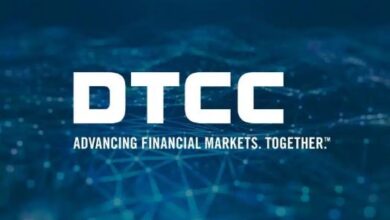Tokenized Assets Projected to Hit $19T by 2033, Says Report
Ripple and BCG outline the new financial era built on blockchain—but is it truly decentralized?

A new report by Ripple and Boston Consulting Group (BCG) signals a transformative shift in global finance: the market for tokenized assets is expected to grow from $0.6 trillion in 2025 to $18.9 trillion by 2033. With a 53% compound annual growth rate (CAGR), tokenized assets are emerging as more than a niche innovation—they are poised to redefine financial infrastructure globally. The era of real-world asset tokenization is no longer theoretical; it is becoming a critical building block in the evolution of financial markets.
But as this future takes shape, a deeper question remains: are we decentralizing finance or simply rebuilding the old system on new rails?
The Three Phases of Tokenized Assets Adoption
The Ripple+BCG report lays out a clear adoption path in three phases:
- Phase 1 – Low-Risk Adoption: Focuses on tokenizing regulated, familiar assets like money market funds and corporate bonds. Institutions build foundational infrastructure for custody and compliance.
- Phase 2 – Institutional Expansion: Moves toward tokenizing complex assets such as private credit, real estate, and structured finance. Institutions explore permissioned-public blockchains to improve liquidity.
- Phase 3 – Market Transformation: Tokenization becomes deeply integrated into financial workflows and consumer products, with secondary markets maturing and new business models emerging.
Early movers such as JPMorgan, BlackRock, and Société Générale are already active, with JPMorgan’s Kinexys platform reportedly processing over $2 billion in daily tokenized transactions.
Why Tokenized Assets Are Gaining Momentum
The report identifies several drivers behind the rapid rise of tokenized assets:
- Regulatory clarity: Jurisdictions such as the EU, UAE, and Switzerland have already enacted legal frameworks for digital assets, with the U.S. expected to follow.
- Mature technology: Institutional-grade wallets, custody platforms, and smart contract frameworks are now enterprise-ready.
- Institutional adoption: Tier 1 banks are integrating tokenized workflows into treasury, lending, and investment management.
A “flywheel effect”—where institutional supply and investor demand reinforce each other—is now accelerating adoption.
High-Impact Use Cases for Tokenized Assets
Ripple and BCG highlight five primary use cases, estimating billions in cost savings and operational efficiency:
- Investment-grade bonds: Cutting intermediaries and achieving near-instant settlement.
- Real estate: Unlocking liquidity and access through fractional ownership.
- Collateral management: Enabling real-time pledging and T+0 settlement.
- Trade finance: Automating invoicing and programmable payments.
- Treasury management: Reducing idle cash and processing costs with tokenized money markets.
Each of these use cases aligns with areas where traditional finance suffers from complexity, inefficiency, or restricted access.
In particular, the report notes that companies could save hundreds of millions of dollars annually in treasury and collateral operations, while unlocking new capital flows through tokenized real estate and structured assets. The benefits are not only in speed and cost but also in expanding access to investors previously excluded from such asset classes.
What Tokenization Isn’t Solving—Yet
Vineet Budki, CEO of Sigma Capital, recently posed a timely question on LinkedIn that resonates with the broader discussion:
“Is asset tokenization just old finance with a blockchain facelift? The tokenization of real-world assets (RWAs) is being hailed as a game-changer, unlocking new levels of liquidity, accessibility, and efficiency in financial markets. But beneath the hype lies a critical question: Are we truly decentralizing finance or simply rebuilding the old system on a blockchain?”
He went on to highlight two key concerns:
→ The Centralization Problem
- Many tokenized assets live on permissioned, centralized platforms.
- This raises issues of censorship, ownership insecurity, and liquidity bottlenecks.
→ Legal and Regulatory Challenges
- Unlike native crypto assets, tokenized RWAs are bound by national laws and compliance frameworks.
- This introduces jurisdictional conflict, political risk, and regulatory red tape.
Still, as Vineet pointed out, the RWA tokenization market is projected to grow into the trillions. So the question remains: Does asset tokenization pave the way for true financial freedom—or are we just giving old finance a shiny, decentralized veneer?
Despite the momentum and efficiency gains highlighted in the Ripple and BCG report, tokenization is still in its formative stages. Several systemic issues remain unresolved, particularly when it comes to decentralization and regulatory complexity.
Efficiency Without Openness?
Tokenization is often framed as a decentralizing force—but many of today’s deployments tell a different story. Most platforms operate on permissioned blockchains managed by financial institutions. These systems offer reliability and control, but come with constraints:
- Restricted participation: Only approved entities can access or operate within these networks.
- Custody disconnect: End users rarely hold direct control over their tokenized assets.
- Limited interoperability: Trading and liquidity remain confined to siloed environments.
According to Ripple’s SVP Markus Infanger, the market is transitioning from isolated on-chain assets to broader integration with economic activity. However, that integration is unfolding through traditional gatekeepers—not open, decentralized ecosystems.
Regulatory Gravity Still Pulls
Real-world assets don’t exist in a regulatory vacuum. Their tokenized versions must comply with local laws, adding layers of complexity that pure crypto assets avoid:
- Fragmented jurisdictions: Regulatory definitions vary widely, complicating international transactions.
- Policy exposure: A change in national policy can alter the legal standing of tokenized assets overnight.
- Compliance load: Especially in cross-border use cases, onboarding, KYC, and legal structuring remain resource-intensive.
Ripple and BCG emphasize the need for industry alignment around token standards, custody protocols, and legal definitions to address these challenges. Without that, tokenization will remain efficient in pockets, but unable to scale as a unified financial layer.
In essence, tokenization as described by Ripple and BCG is not a DeFi revolution. It’s a modernization of legacy finance, where banks, custodians, and market infrastructure providers retain control. The goal isn’t to eliminate intermediaries—but to make them faster, cheaper, and more interoperable.
“Too many firms are trying to build their own settlement systems,” the report states. “The strategic value lies in what is built on top—not the plumbing beneath.”
That makes the system more efficient—but not necessarily more decentralized.
The Road Ahead for Tokenized Assets in the MENA Region
For MENA-based institutions, especially in progressive markets like the UAE, the report provides validation for existing initiatives. Regulators in Abu Dhabi, Dubai, and Riyadh are actively building frameworks for digital assets, and projects in real estate tokenization are already underway.
Ripple and BCG note that regions like the Middle East are showing early leadership in tokenizing private credit and real estate, backed by sovereign policy alignment and infrastructure investment. This momentum is further reinforced by regulatory bodies like the Dubai Financial Services Authority (DFSA), which recently launched a tokenization sandbox to explore compliant frameworks for real-world asset tokenization in the UAE. Unlock Blockchain reported on this initiative, highlighting the region’s proactive approach in experimenting with cross-border tokenized instruments and regulated innovation.
As the global market accelerates, regional players must decide whether to follow global standards—or contribute to shaping them. Tokenized assets are not a buzzword—they’re becoming a foundational layer of tomorrow’s finance. But the way they’re implemented matters. Whether this shift leads to true democratization or simply a more efficient version of the old guard will depend on who builds the system—and for whom.





